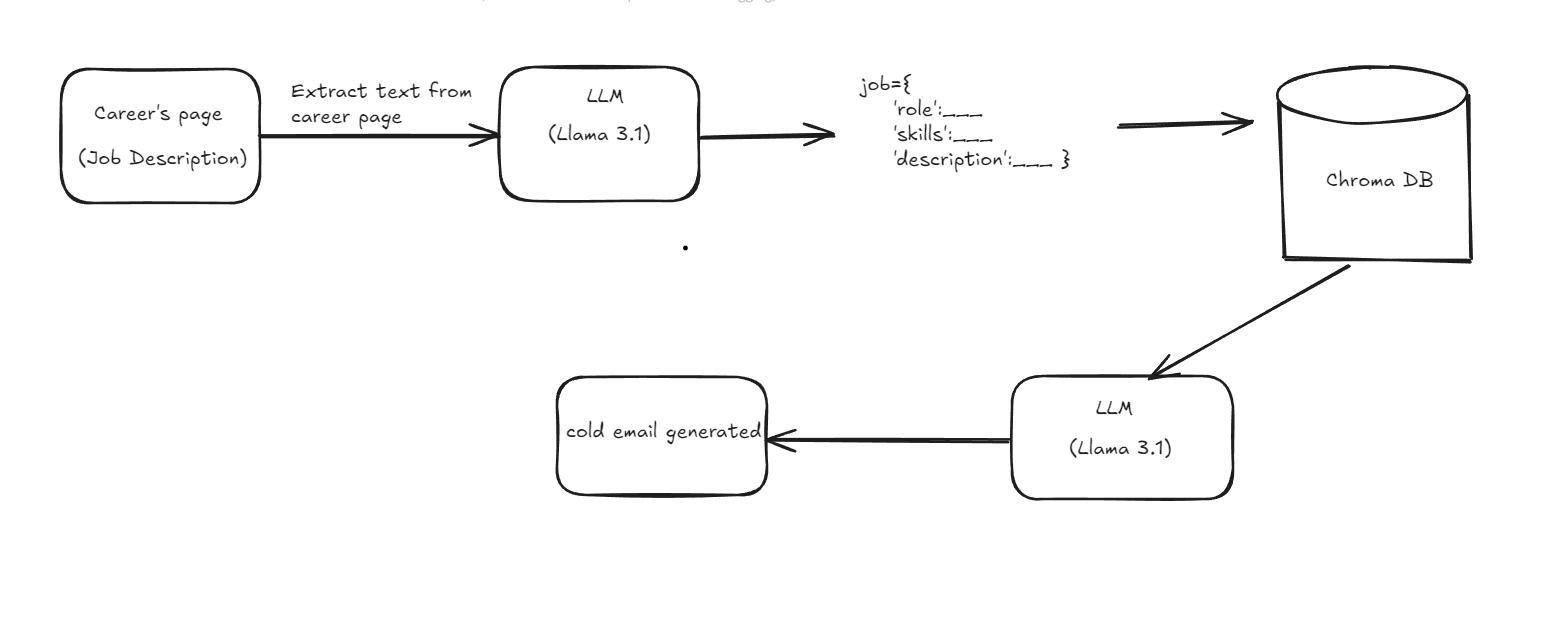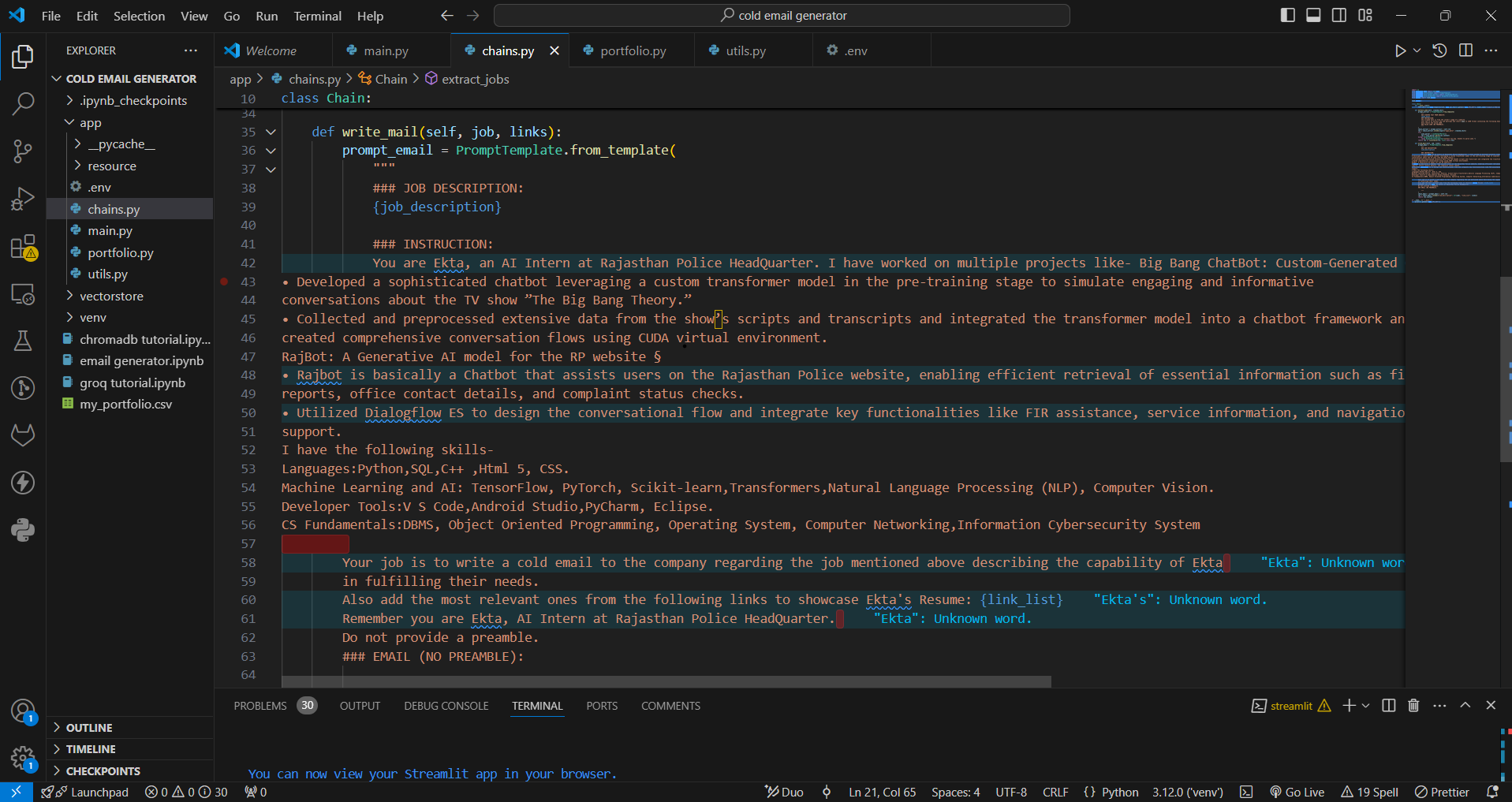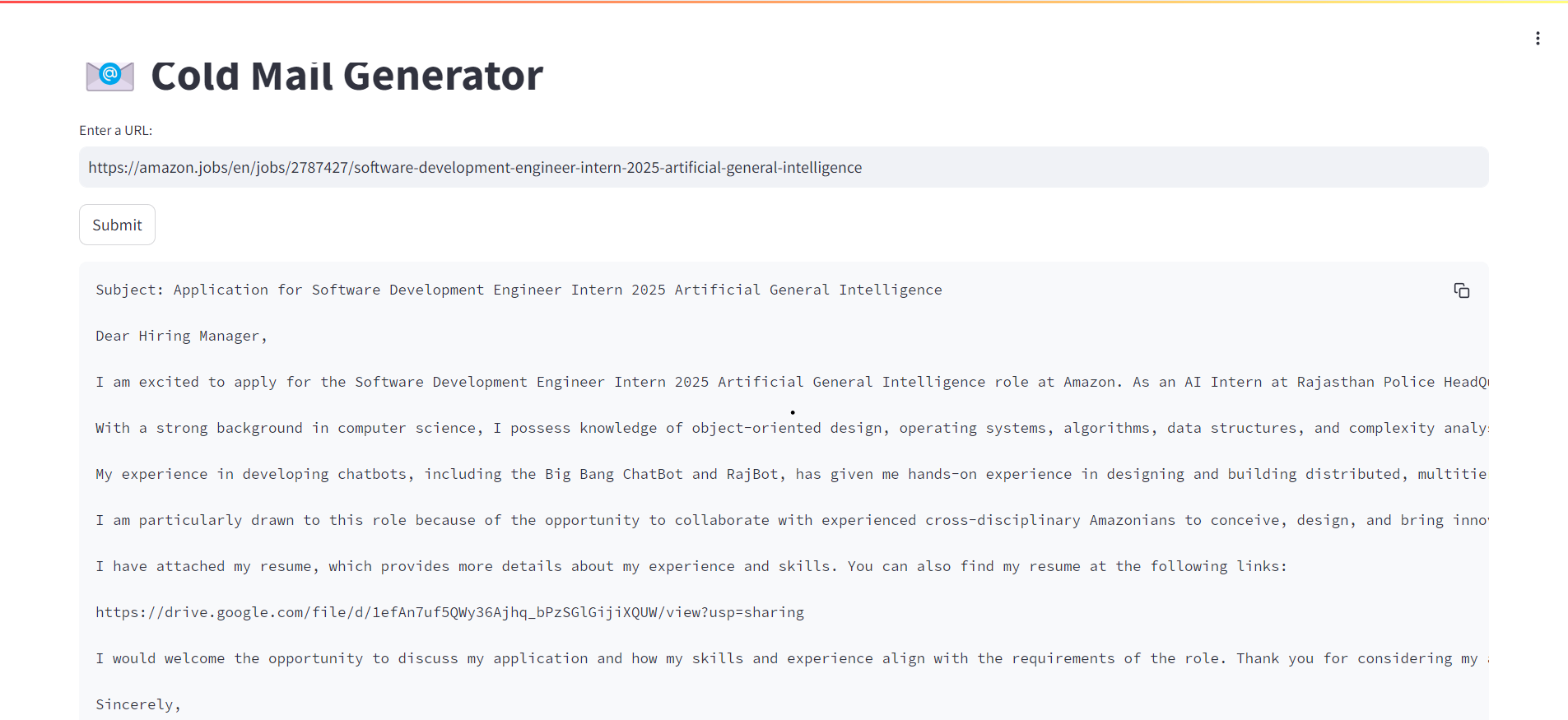Llama 3.1: Your Cold Email Ally
 Ekta Gupta
Ekta Gupta
In the fast-paced world of digital communication, sending cold emails has become an essential strategy for businesses and professionals alike. Whether you're a freelancer seeking clients, a startup pitching investors, or a job seeker reaching out to potential employers, crafting the perfect cold email can make all the difference. However, writing compelling cold emails consistently can be a daunting task. This is where the power of artificial intelligence comes in, specifically through a groundbreaking tool I developed: a cold email generator using Llama 3.1.
What is Llama 3.1?
Llama 3.1 is an advanced language model designed for various natural language processing tasks, including text generation, summarization, and language translation. With its impressive ability to understand context and generate human-like text, Llama 3.1 is an ideal candidate for automating the cold email creation process. This project aims to harness its capabilities to help users create personalized and effective cold emails effortlessly.
Why Cold Emails?
Cold emails are unsolicited messages sent to recipients with whom you have no prior relationship. While they may have a reputation for being ignored, a well-crafted cold email can open doors to new opportunities. According to studies, personalized cold emails have a significantly higher response rate compared to generic templates. This is why integrating AI into the cold email process is crucial: it allows users to personalize their outreach while saving time.
Building the Cold Email Generator

This is the architecture of the workflow of the project.
1. Project Setup
To kick off the project, I set up a virtual environment to ensure all dependencies were managed efficiently. I then integrated essential libraries, including Streamlit for creating a user-friendly interface and Langchain for natural language processing tasks.
To get started we first need to get an API_KEY from here: https://console.groq.com/keys. Inside
app/.envupdate the value ofGROQ_API_KEYwith the API_KEY you created.To get started, first install the dependencies using:
pip install -r requirements.txtRun the streamlit app:
streamlit run app/main.py
2. Leveraging Llama 3.1
The core of the project revolves around utilizing Llama 3.1's text generation capabilities. By inputting key information about the recipient and the purpose of the email, users can generate a tailored cold email with just a few clicks. The model takes into account various factors, including the recipient's background and the context of the message, to create relevant and engaging content.
One of the core functionalities of the Cold Email Generator is its ability to scrape job listings and generate tailored emails. Let’s take a look at how we extract these job postings from websites using a highly efficient prompt-based method.
The following Python method, extract_jobs, is designed to parse job descriptions scraped from websites and convert them into a structured JSON format that can be easily processed to generate cold emails.
pythonCopy codedef extract_jobs(self, cleaned_text):
prompt_extract = PromptTemplate.from_template(
"""
### SCRAPED TEXT FROM WEBSITE:
{page_data}
### INSTRUCTION:
The scraped text is from the career's page of a website.
Your job is to extract the job postings and return them in JSON format containing the following keys: `role`, `experience`, `skills`, and `description`.
Only return the valid JSON.
### VALID JSON (NO PREAMBLE):
"""
)

The method write_mail plays a central role in this process, leveraging Llama 3.1 to craft a unique email based on the candidate’s background and the job posting.
3. User-Friendly Interface
Streamlit allowed me to develop an intuitive web interface for users. This interface includes input fields for recipient details, email objectives, and any specific points users want to include. Once the user submits this information, the app generates a cold email that can be easily copied and pasted into any email client.
4. Testing and Feedback
After implementing the generator, I conducted extensive testing to ensure the quality of the generated emails. I invited users to provide feedback on the output, which helped refine the model's prompts and improve the overall experience. Continuous iteration and user input were vital in enhancing the generator's effectiveness.
Real-World Applications
The cold email generator powered by Llama 3.1 can be a game-changer for various users:
Freelancers: Quickly draft outreach emails to potential clients, showcasing their skills and services.
Job Seekers: Craft personalized messages to hiring managers, increasing their chances of landing interviews.
Sales Teams: Generate customized pitches for prospective customers, making outreach efforts more effective.
Conclusion
The Cold Email Generator using Llama 3.1 is more than just a tool; it's a revolutionary approach to email outreach that combines the power of AI with the need for personalized communication. By automating the cold email process, we can save time, enhance productivity, and ultimately create more meaningful connections in our professional lives.
As AI continues to evolve, so will the ways we communicate. Embracing tools like the Llama 3.1 cold email generator will enable us to stay ahead in an increasingly competitive landscape. Try it out, and watch your outreach transform!

Subscribe to my newsletter
Read articles from Ekta Gupta directly inside your inbox. Subscribe to the newsletter, and don't miss out.
Written by
